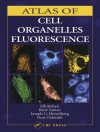The humoral response of the immune system to a foreign antigen usually requires the recognition of two antigenic determinants. The one, called the carrier, is recognized by T-Iymphocytes, the other, called the hapten, by B-Iympho- cytes. As a consequence, T – and B-Iymphocytes proliferate, B-Iymphocytes produce hapten-specific antibodies, and the system develops memory to the antigens. It was long thought that antigens would form a bridge to mediate the cooperation of T – and B-Iymphocytes. However, it now appears that antigens are broken down to fragments which then act as carrier determinants for T -lymphocytes. The cells which originally process antigen are called an- tigen-presenting cells. They have phagocytic properties. They can take up and degrade antigens, in the case of pro- teins to peptides. The peptides of protein antigens reappear on the surface of the antigen-presenting cells, where they must become associated with membrane proteins encoded by genes of the major histocompatibility complex (MHC) in order to be recognized by T-Iymphocytes. To activate helper T-Iym- phocytes which cooperate in antibody responses, MHC class II molecules have to be expressed on the surface of the antigen-presenting cells. Once T -lymphocytes have be- come activated, they are ready to cooperate with B cells.
Hilary Koprowski & Fritz Melchers
Peptides as Immunogens [PDF ebook]
Peptides as Immunogens [PDF ebook]
Achetez cet ebook et obtenez-en 1 de plus GRATUITEMENT !
Langue Anglais ● Format PDF ● ISBN 9783642714405 ● Éditeur Hilary Koprowski & Fritz Melchers ● Maison d’édition Springer Berlin Heidelberg ● Publié 2012 ● Téléchargeable 3 fois ● Devise EUR ● ID 6331165 ● Protection contre la copie Adobe DRM
Nécessite un lecteur de livre électronique compatible DRM












